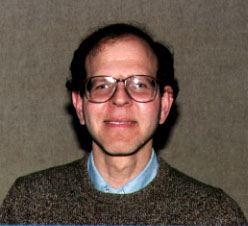
Research Interests
Dine works on problems in theoretical elementary particle physics and cosmology. He was among the first to suggest that supersymmetry, a hypothetical new symmetry of the laws of nature, might solve some of the outstanding problems of the "Standard Model" of elementary particles. This symmetry relates fermions (particles with fractional spin, such as the electron, proton and neutron) to bosons (particles with integer spin, like the photon, gluons, W± and Z°) and implies the existence of many new particles. Since no such symmetry is observed at low energies, this symmetry must be "spontaneously broken"; Dine and collaborators were the first to show that in some supersymmetric theories, the dynamics of the theory lead to symmetry breakdown. With collaborators and students, he has developed the first successful supersymmetric extensions of the standard model in which supersymmetry is broken by low energy dynamics. These models make dramatic predictions for forthcoming experiments, and now provide one of the principal frameworks for supersymmetry phenomenology. Dine was also among those who proposed the "invisible axion" as a solution of the strong CP problem, and recognized its possible role as a candidate for the dark matter.Superstring theories are candidate unified theories of all interactions, including Einstein's theory of gravitation. These theories are still not well understood, and it has proven difficult to extract experimental predictions from these theories. Dine's research into string theories has been aimed at developing a more complete understanding of these theories. In addition to contributing to the technical development of the subject, Dine has pointed out some of the obstacles to developing a phenomenology, and possible solutions.
Dine has also worked extensively on problems in cosmology. This work has included possible origins for the asymmetry between matter and antimatter. As pointed out long ago by Andrei Sakharov, within the framework of the big bang theory one can understand why the universe contains mostly matter, rather than equal amounts of matter and antimatter, provided that certain conditions are satisfied. Dine's efforts in this area have focused on two mechanisms, one exploiting baryon number violation in the standard model, the other (widely known as the "Affleck-Dine mechanism") involving coherent production of baryon number. Dine's work has also included enumeration of possible dark matter candidates, studies of cosmology and string theory, and issues in inflationary cosmology.
Selected Publications
New Tools for Low Energy Dynamical Supersymmetry Breaking, Michael Dine, Yuri Shirman and Ann Nelson, Phys. Rev. D53, 2658 (1996), e-Print Archive: hep-ph/9507378.Experimental Signatures of Low Energy Gauge Mediated Supersymmetry Breaking, Savas Dimopoulos, Michael Dine, Stuart Raby and Scott Thomas, Phys. Rev. Lett. 76, 3494 (1996), e-Print Archive: hep-ph/9601367.
Constraints on Theories with Large Extra Dimensions, Tom Banks, Michael Dine and Ann Nelson, JHEP 06, 014 (1999), e-print archive hep-th/9903019.
Seeking the Ground State of String Theory, Michael Dine, Plenary talk at 13th Nishinomiya-Yukawa Memorial Symposium on Dynamics of Fields and Strings, Nishinomiya, Japan, 12-13 November, 1998, Progr. Theor. Phys. Suppl. 134, 1 (1999), e-Print Archive: hep-th/9903212.
Possible Scales of New Physics, Michael Dine, Plenary talk given at the American Physical Society (APS) Meeting of the Division of Particles and Fields (DPF 99), Los Angeles, CA, 5-9 Jan 1999, e-Print Archive: hep-ph/9905219.
Supersymmetry, The Next Layer of Structure, Michael Dine, in Beamline, Winter 1999, R. Donaldson, ed., (available at http://www.slac.stanford.edu/beamline).
Towards a Solution of the Moduli Problem of String Cosmology, Michael Dine, Phys. Lett. B482, 213 (2000), e-Print Archive: hep-th/0002047.
Page created August 2000